Every day in the garden is splendid, though some more than others, and a few where dark clouds must be brushed aside for the barest glimpse of sunshine. I’ve been happily spoiled by mild temperatures in early March, so when a single night drops below freezing I am greatly disappointed. Much fussing ensues, but such variations are, of course, the standard for late winter and even into early April.
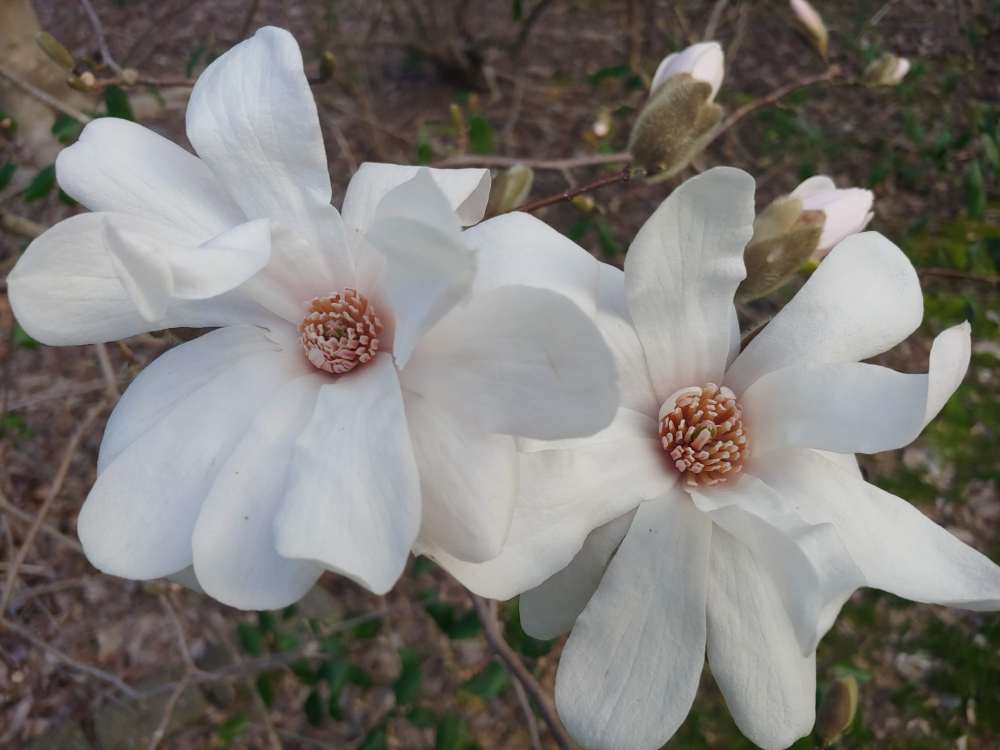
Finally, the two magnolias in close proximity, ‘Merrill’ and ‘Royal Star’ are beginning to flower, though neither is nearing its peak. Just up the street a Star magnolia is past its peak, but the differing bloom cycles in a distance of two hundred yards are unsurprising, with this garden being cold tempered into May.

While I’ve too often touted this winter’s early blooms, the highly favored paperbushes (Edgeworthia chrysantha, below) have been on a very typical schedule, and only now are they reaching their peak. In the recent past, color was seen on paperbushes by late January, with notable flowering in mid February. Considering the mildness of the winter, I would guess a similar flowering schedule, but it is several weeks later along with the magnolias that are flowering a week later than usual.
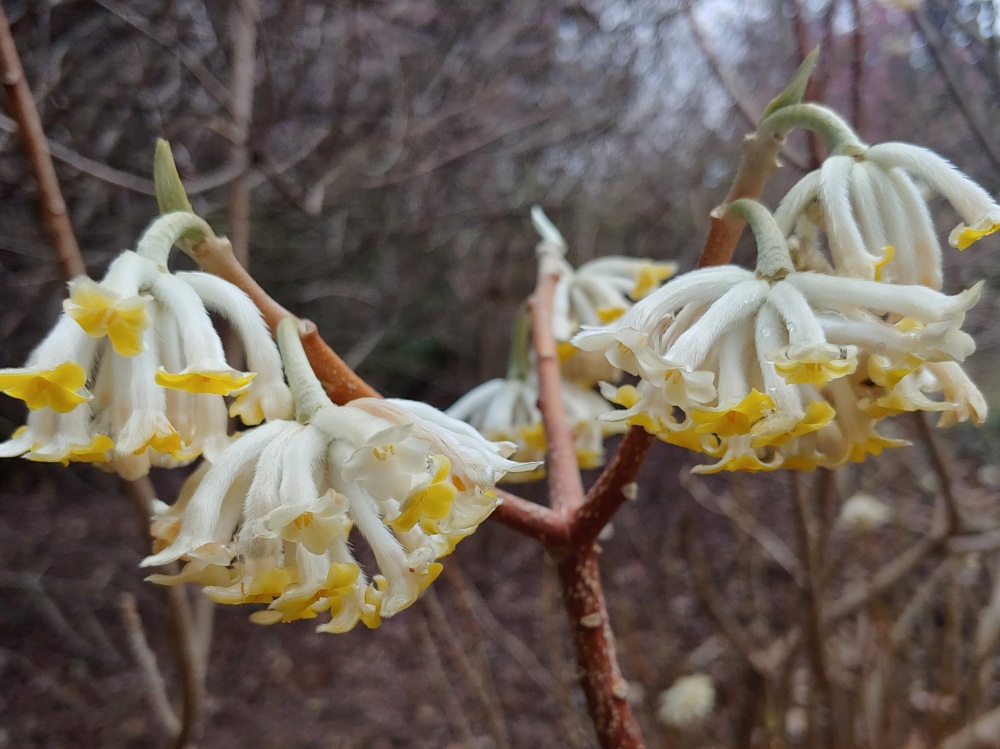
There is no easily definable reason that I favor the paperbush, but I sense the same from others who possess one. There are five in the garden, with all far surpassing the mature sizes stated by references, despite two being pruned to less than half following damage in a winter when temperatures dropped to six or seven below zero (Fahrenheit). The clustered, yellow tipped, tubular blooms are lovely, and there is somewhat of a tropical feel to the large, dome shaped shrub. Paperbush is uncommon here, or even in the warmer southeast where it should be widely planted, though it is not.
A small, red tip flowered paperbush (Edgeworthia chrysantha ‘Akebono’) has survived two moves, the first from a prime area that became much too damp with thirty additional inches of rain a year ago. I fear the shrub has not been given enough space in its current location, but this paperbush is said to grow much smaller. We’ll see, but I am skeptical. References suggest the yellow flowered paperbush will grow to four to five feet wide and tall, but here several are seven or eight feet tall and nearly twenty feet across. If the red flowered version grows even half this size there will be trouble.
In any case, this paperbush has survived multiple transplants as barely suitable spots became available. A time or two I presumed it was lost, but today there are two tiny, red tipped flowers. I am overjoyed, and cannot wait for more, and perhaps full sized blooms a year from now.
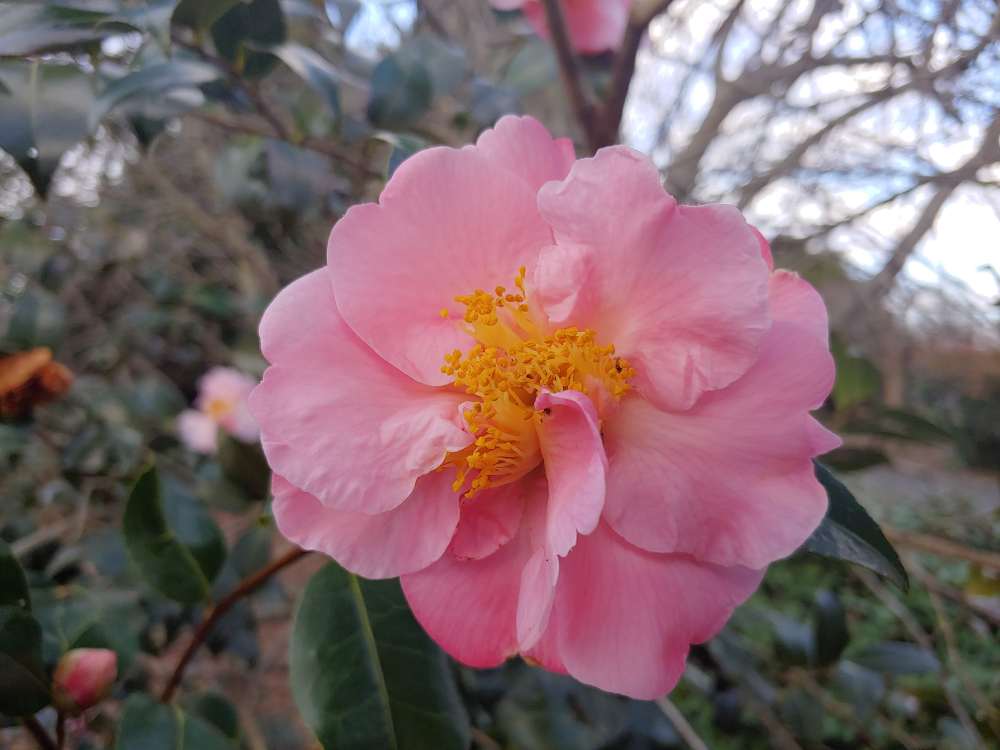
Today, the quantity of camellia blooms in the garden is far greater than I’ve seen. Three autumn flowering camellias (Camellia ‘Winter’s Interlude’, above) that are shaded, and often long behind others in flowering, are now blooming as if this was their prime season. These are joined, though on the far side of the garden, by a handful of spring flowering Camellia japonica (below). With few cold nights, and those barely below freezing, blooms are undamaged, a most welcomed rarity.

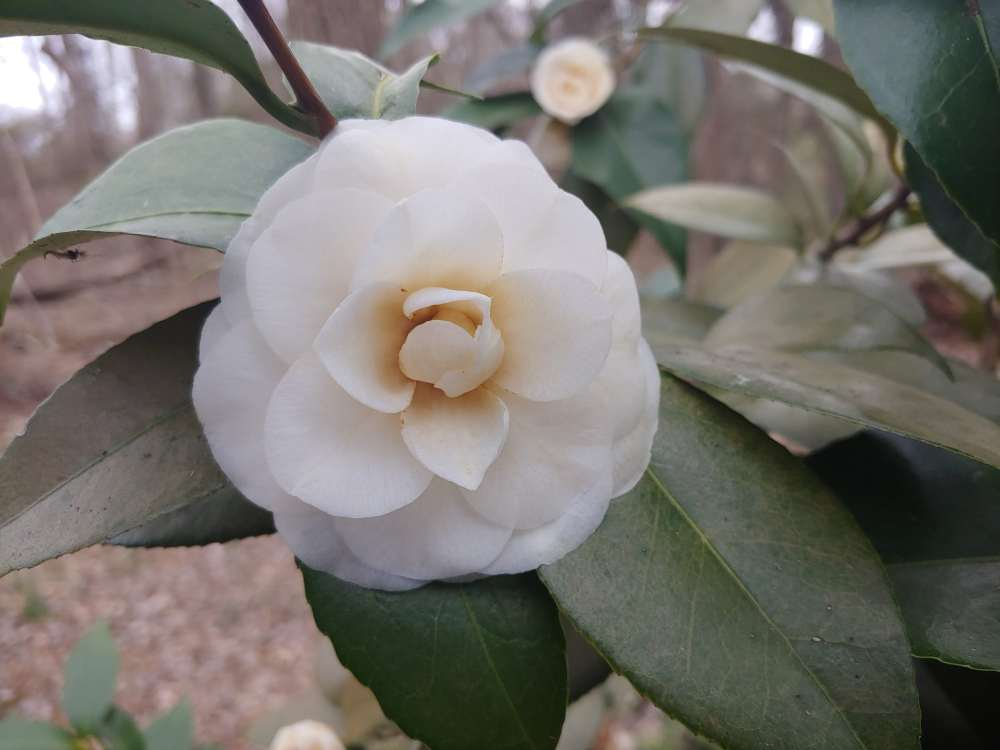
Flowers on the spring blooming camellias became sparse until a tree fell in a December ice storm several years ago, and then an arching branch that cracked in a summer storm was removed. The resulting additional sunlight is not bright, but just what was needed, and now the handfuls of camellias are all budded with many in flower.
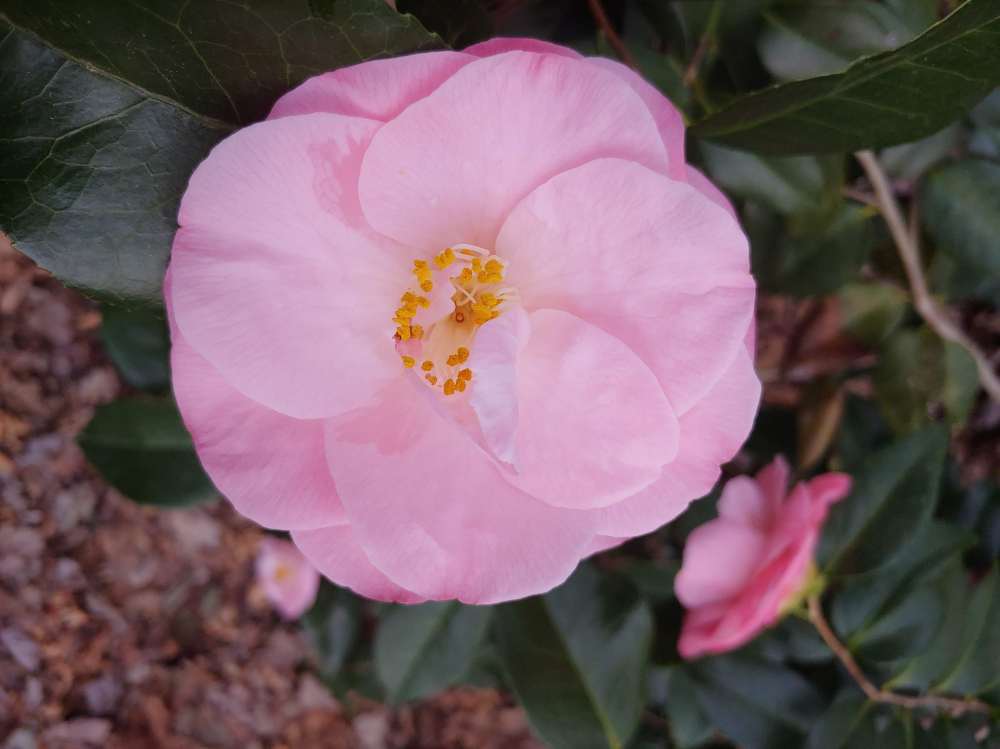
What a welcome and beautiful distraction this post is! I have been immersing my self in plant love this past week or so and my mental health is much better for it! Thank you for this blog.
Today, the late winter blooms of hellebores linger, joined by magnolias, camellias and of course scattered groups of daffodils. There is trouble all around, but not here.
Is that an old classic white camellia? It looks like ‘Purity’. It is my favorite, but is not very popular anymore.
I’m uncertain, but most likely it’s one of the recently introduced cold hardy cultivars, possibly ‘April Snow’.
Oh, I did not consider resiliency to frost. It is not important here.